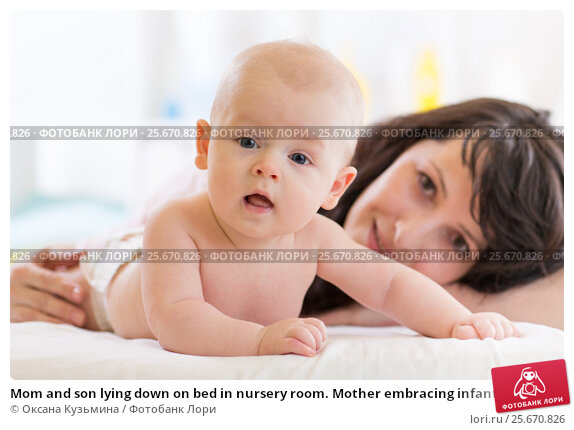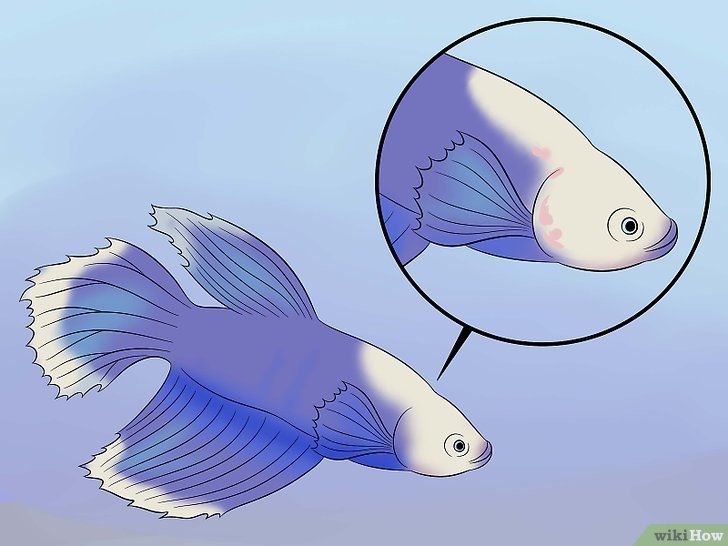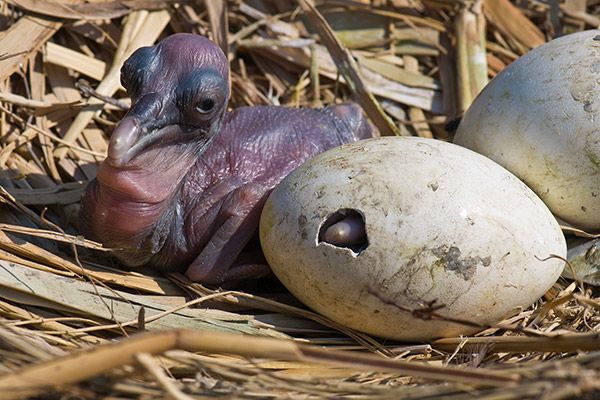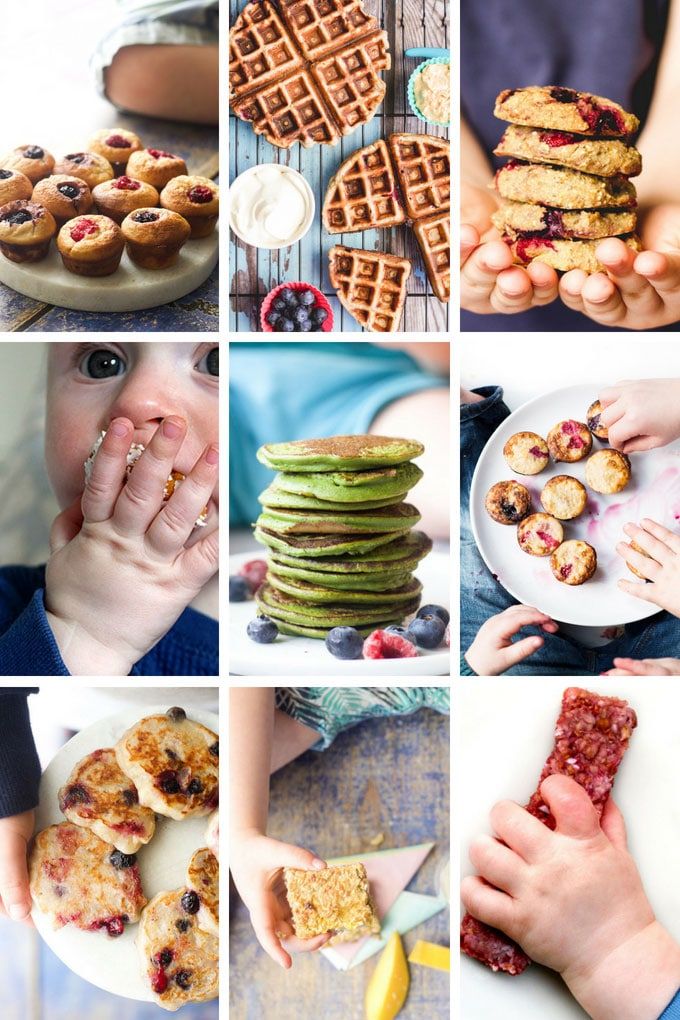Homemade baby parrot food
Homemade Hand Feeding Formula for Birds
Bird pellets are the most common type of food used to feed pet birds. They are convenient to use because you only need to pick up a packet at the store and feed them to the bird. It also gives you peace of mind knowing that they contain the correct amounts of all nutrients required by the bird.
What if you cannot afford bird pellets for your feathered friend? What if you happen to be in a place where pellets are just not available? Homemade formulas are the alternative.
It is important to have a few homemade hand feeding formulas for birds so that your bird doesn’t go hungry on the rare occasion when you cannot get your hands on pellets.
To come up with a good homemade hand feeding formula, you must have a basic understanding of your bird’s nutritional needs.
Understand Your Bird’s Nutritional Needs
Recommended diets for pet birds are more or less the same for most birds. They require fruits, vegetables and seeds or pellets. Differences come in depending on the specific bird breed because certain breeds require more of one component than others. Some birds are prone to obesity so it is important to keep this disease in mind especially if your bird is one of these.
Varying needs for specific breeds
African gray parrots do best on a diet of 70% basic nutrition such as pellets and 30% other foods such as fruits, nuts and vegetables.
Canaries thrive on breed-specific pellets or seed mixes, song mixes and vegetables. These birds need not be fed with vegetables on a daily basis. Two or three times a week is sufficient.
Conures are naturally active birds so obesity is not a concern with them. They thrive on a base diet of seed mixes with rotational additions of vegetables, dried fruits and nutritious treats.
Quaker parakeets do best with equal parts of pellets or basic nutrition and vegetables. Grain- based treats can be used during play or training time.
Breeds prone to obesity
Cockatiels, Amazon parrots and Macaws are highly prone to obesity.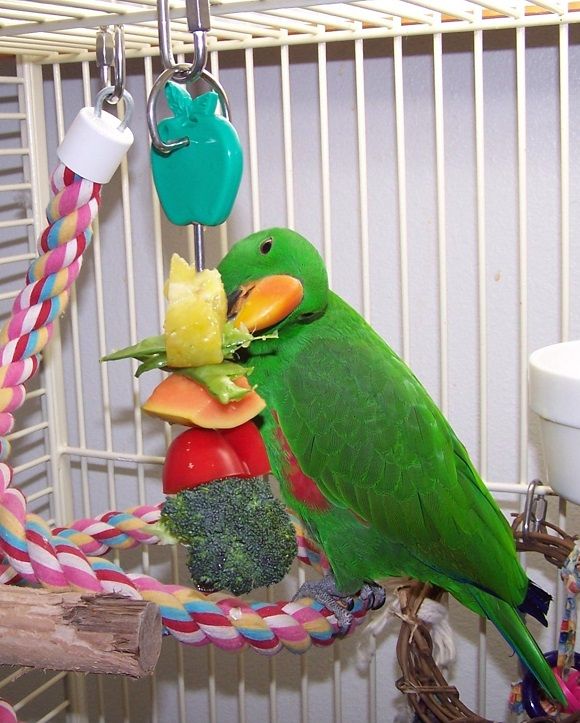
Cockatiels do well with diets made up of 60% basic nutrition or pellets, 40% seed mixes specific to this breed and vegetables.
Dietary needs for Amazon parrots depend on their activity level and size. Recommended amounts are 30% pellets or other basic nutrition, 20% whole, dried foods like nuts, seeds and fruits and 50% fresh fruits and vegetables.
Homemade Handfeeding Formulas
Even if you don’t plan to feed your bird on homemade formulas all the time, it is always a good idea to have a few recipes handy. You never know when you will need to whip something up for your feathered friend.
Here are a few recipes your bird will like.
Recipe 1
- 1 tablespoon of glucose powder
- 1 packet of high protein baby cereal
- 1 cup of ground sunflower seeds
- 4 Granita biscuits ( finely ground)
- 1 cup of almonds (ground)
- 1 cup of corn meal ( maize meal)
Recipe 2
- 1 cup of corn meal (maize meal)
- 1 cup of millet meal
- 1 cup of raw what germ
- 1 cup of finely ground sunflower seeds
- 2 cups of high protein baby cereal
- 1 cup of finely ground, high protein dog biscuits
Either of the two recipes above could also include peanut butter or apple sauce baby foods.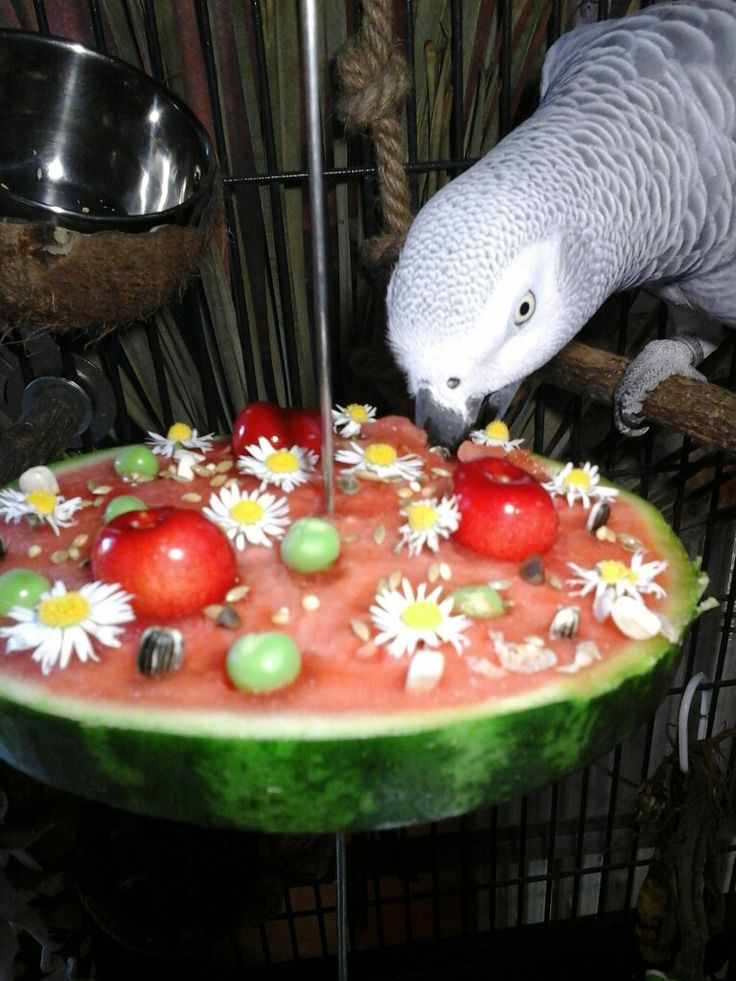 When using apple sauce baby foods, make sure to use the smooth type so that your bird doesn’t have to deal with lumps.
When using apple sauce baby foods, make sure to use the smooth type so that your bird doesn’t have to deal with lumps.
Recipe 3
Blend the following ingredients:
- 1 teaspoon of baby creamed corn
- 3 teaspoons of baby cereal
- 3 teaspoons of applesauce
- 3 teaspoons of canned baby mixed vegetables
- 3 teaspoons of plain yoghurt
- 1 banana
- 3 teaspoons of peanut butter (smooth)
To this mixture add 12 ounces of pellets which have been soaked in bottled water for 20 minutes. Once all these ingredients are mixed, cook the in a microwave for several minutes.
How to Deal With Picky Eaters
It not just humans who sometimes develop picky eating habits. Some birds have the very same behavior. This makes feeding them a challenge because they may end up over nourished with some nutrients and lacking in others. These are some tricks bird owners have used to get picky eaters to consume a wide variety of foods.
Add a challenge to food. Make a hole through a rice cake and hang it in the bird’s cage.
Place one or two pinches each of nuts, dried pasta, dried fruit and pellets in a paper lunch sack. Use a piece of string or ribbon to tie the sack and then hang it in the bird’s cage. He will enjoy the challenge of foraging through a double-bagged sack.
Play around with shapes and temperature of foods. If your bird is a picky eater, trick him by changing the shape or temperature of his food. If he refuses to eat raw vegetables, try feeding him with cooked versions of the same foods. Chop up fruits into cubes to alter shapes. Give him oranges with the rind still on or peas in a pod.
Make use of individual preferences. Just like we humans have strong likes and dislikes for certain foods and textures, so do birds. Observe to find out what he likes most. Use these favorite foods to come up with healthy treats which your bird will enjoy.
Vet-Approved Recipes
With a clear understanding of your bird’s basic nutritional requirements and ideal food types, you can let your creativity take lead to come up with all sorts of recipes.
When you come up with one or a few formulas you would like to stick with, have a veterinarian approve them to make sure they cover all the required nutritional requirements. They could contain too much of one nutrient and too little of another and this would cause imbalances in the bird’s nutritional intake.
Conclusion
Homemade hand feeding formulas for birds are nothing short of a creative art. You can come up with all sorts of combinations. However, just like art, there are rules to be followed and there is need to understand the basics of the entire process.
Make sure you have a clear understanding of your bird’s nutritional needs when making homemade feeding formulas. When you are happy with one, run it by a professional veterinarian to make sure it is nutritionally balanced.
What Can I Feed My Baby Parakeet? 5 Homemade Baby Budgie Food Recipes – My Pet Parakeet
Your baby is growing up! They're no longer a tiny newborn parakeet but are now an adolescent parakeet that needs to be fed.
Feeding your little feathered friend can be a daunting task, and there are many things you need to know about what they should eat.
In this blog post, we will discuss 5 homemade baby parakeet food recipes with step-by-step instructions. These recipes provide healthy nutrition without any dangerous chemicals or artificial flavors in them.
You'll also find out what types of foods baby parakeets can't eat and how much each recipe feeds!
You can feed any of these recipes to your newborn parakeets from day one to weaning if, for whatever reason, the mother parakeet is unable to feed and nurture them.
Table Of Contents
- 5 Homemade Baby Parakeet Food Recipes
- How To Prepare The Formula (Step-by-Step Guide)
- How To Feed The Formula To Your Baby Parakeet
- How To Preserve The Formula
- FAQ
- Don't Forget Your Pet Parakeet Must-Haves!
What Kind Of Nest Do Parakeets Need...
Please enable JavaScript
What Kind Of Nest Do Parakeets Need? Choosing The Right One
5 Homemade Baby Parakeet Food RecipesThe following recipes are hand-feeding formulas that can be fed to your baby parakeet from the time it is hatched from the egg until it is time to wean and eat a regular diet of seeds and pellets.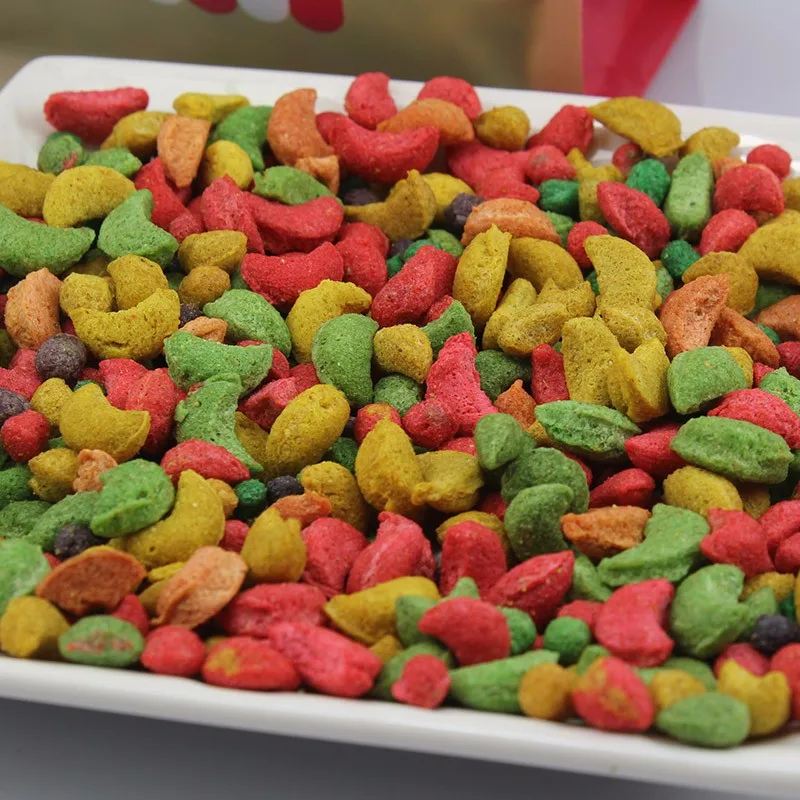
- Check this post out to learn more about caring for baby budgies when their mother cannot!
These homemade formulas will help your baby parakeet to grow quicker and wean sooner, in addition to developing a brighter, fuller plumage.
We tend to gauge the measurements by eye when it comes to the dry ingredients such as ground oats and ground wheat, as you will find yourself adjusting the recipe based on what you have in your pantry and what your bird prefers.
Trending
Parakeet Owners Guide: How To Take Care Of A Parakeet
As long as you include good, whole sources of protein and fats and stay away from foods your bird shouldn't eat, your parakeet will be happy!
Baby parakeets require a high-protein diet and their stomachs are relatively small which requires them to eat small amounts of food at each meal.
1) Cornmeal, Ground Oat, Boiled Egg (whole), Coconut OilCornmeal is a good source of protein, calcium, and Vitamins B & E. Ground oats provide fiber as well as minerals iron, copper, and zinc.
Ground oats provide fiber as well as minerals iron, copper, and zinc.
Boiled eggs have a lot more nutrients than raw eggs, which are difficult to digest when eaten by baby birds who do not produce the proper enzymes needed to break down such food items quickly.
2) Ground Oats, Chia Seeds, Ground Corn, Dried Beetroot pulp
In this recipe, the ground oats provide a source of protein, calcium, and Vitamins B & E.
Chia seeds provide fiber as well as minerals iron, copper, and zinc.
Ground corn is rich in antioxidants and dietary fibers, while beetroot provides Vitamin A, which leads to a vibrant bright color of your baby parakeet's plumage by providing beta-carotene.
3) Ground Wheat, Egg Protein Powder, Ground Flaxseed, Dried Pumpkin
In this recipe, the pumpkin provides a source of Vitamins A, C, and E.
Flaxseed is rich in Omega- fatty acids while wheat provides a good amount of protein and fiber.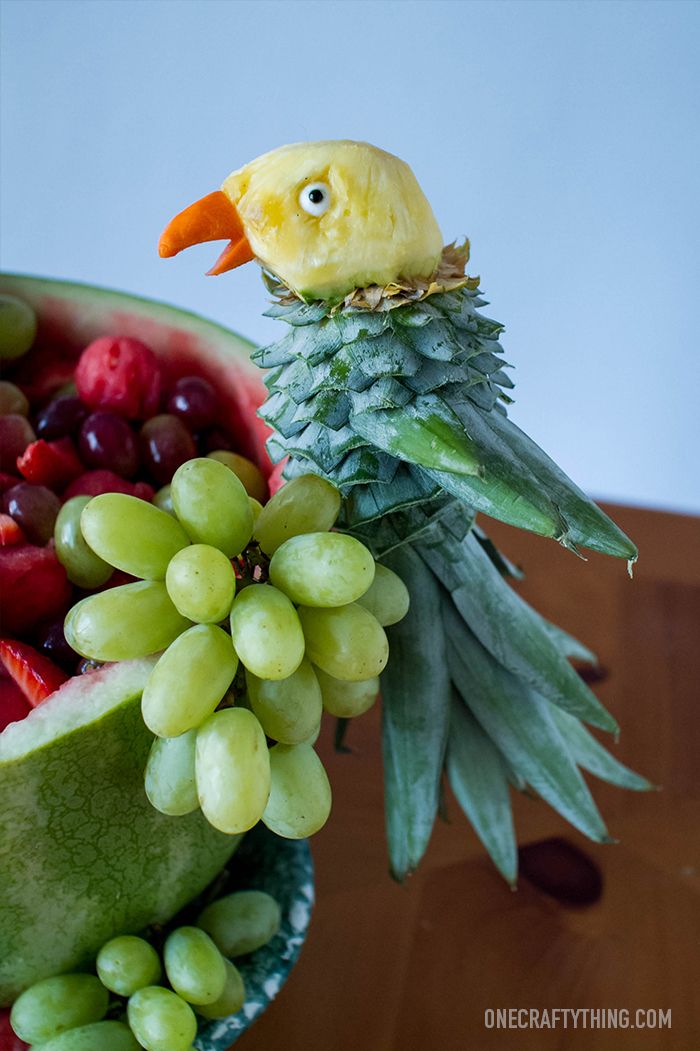
Egg Protein Powder contains all the essential vitamins and minerals for baby parakeets that are not able to be found from other ingredients listed in this recipe, as well as beta-carotene.
4) Ground Brown Rice (or Arrowroot Powder) , Dried Peas, Dried/Ground Sunflower Seeds
This recipe contains rice which is naturally enriched with Vitamin B.
The peas provide a source of protein and fiber, while the whole wheat flour provides Vitamins A and E as well as zinc for your baby parakeet's feather coloration.
Some birds do not like rice, so if you find that this is the case, for any recipe with ground brown rice listed, try replacing it with arrowroot powder).
5) Ground Oats, Ground Brown Rice (or Arrowroot Powder), Soy Protein, Flaxseed
This recipe contains oats that are naturally rich in Vitamin E. The brown rice provides a source of Vitamins A and B as well as zinc, while the soy protein is enriched with all eight essential amino acids.
The flaxseeds contain omega-fatty acids, magnesium, manganese, phosphorus, and phytoestrogens.
How To Prepare The Formula (Step-by-Step Guide)We recommend that you only use one of these at a time and see how your baby parakeet likes them.
- Combine all ingredients in a bowl.
- Place them in a high-speed blender for 30-60 seconds until you have a smooth (not thick and sticky) consistency.
- Add all ingredients to a saucepan and bring to a boil with constant stirring for three minutes.
- Add more water if/when needed to maintain a thick liquid consistency.
- Remove from heat and let cool until the mixture is lukewarm but not cold.
- Feed your baby bird!
We also recommend adding some bird vitamin drops to your homemade formula for a vitamin boost. This should be added to the individual feed and not the entire batch, so you can manage how much you are giving your parakeet at any given feed.
If you have quite a busy schedule, it can be quite time-consuming to make your own baby bird feed. No worries, we've got you covered. This high-fat, nutrient-dense hand-feed formula will do just as well.
No worries, we've got you covered. This high-fat, nutrient-dense hand-feed formula will do just as well.
Trending
Best Parakeet Jungle Gyms (Top 6)
Sale
Kaytee Exact Hand Feeding High Fat Formula Pet Bird Baby Food For Parrots, Parakeets, Lovebirds,...
- Balanced high-nutrient formula helps babies grow faster, wean earlier and develop stronger, brighter plumage.
- Contains probiotics to encourage a healthy population of intestinal microorganisms.
- Digestive enzymes are included to ensure adequate digestion of carbohydrates and proteins. These enzymes offer a particular value to a newly...
- Exact Hand Feeding Formula has compatible tastes and ingredients with exact Conversion and exact Adult Daily Diets to help reduce digestive...
- This product is formulated for use with: Baby Parrots (includingParakeets, Lovebirds, Cockatiels, Conures, Cockatoos, Macaws,Amazons, African.
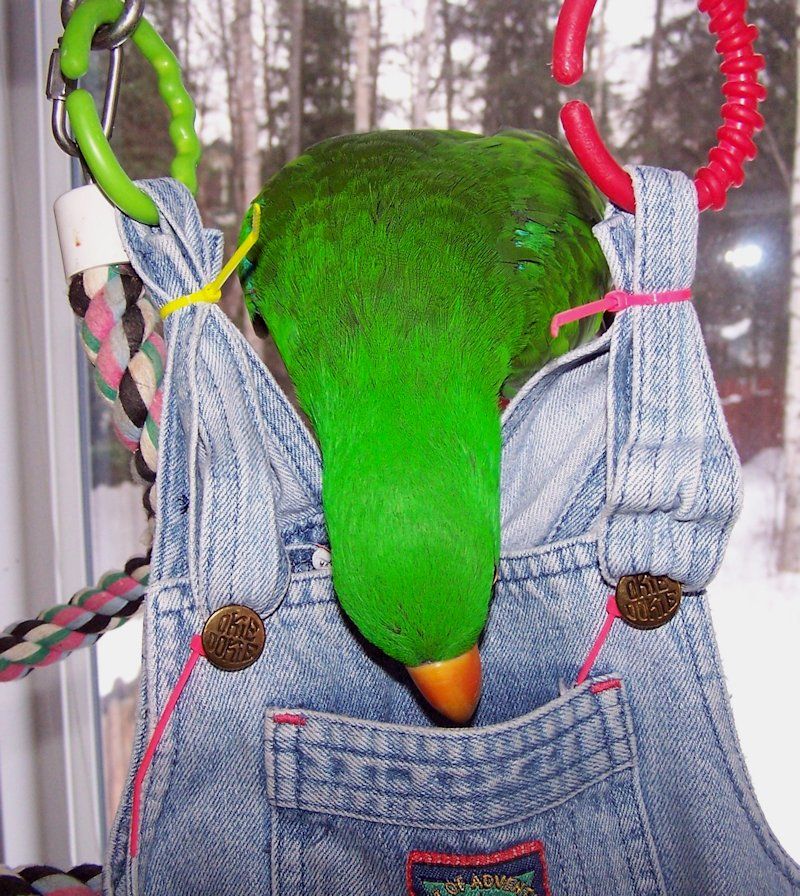 ..
..
You will need baby bird feeding syringes to feed formula to your baby bird. This is the “least messy” way to feed them. The tip of these syringes curves to allow easy feeding into your bird's beak.
You can also use a baby spoon, but it will be more difficult to get the food into their tiny beaks.
How To Preserve The FormulaIf you have used any wet ingredients, you will need to freeze the formula. We recommend freezing it in an icecube tray so you can separate and defrost smaller portions.
If you wish to preserve the formula as a powder instead, replace the wet ingredients with a dried variety (or dry them yourself).
Combine the ingredients and place them in a blender for 30-60 seconds (or until they become a fine powder.)
Store them in an airtight container until needed.
Once you have the blended powder formula in a container, you simply take out a few teaspoons at feeding time and blend with boiled water.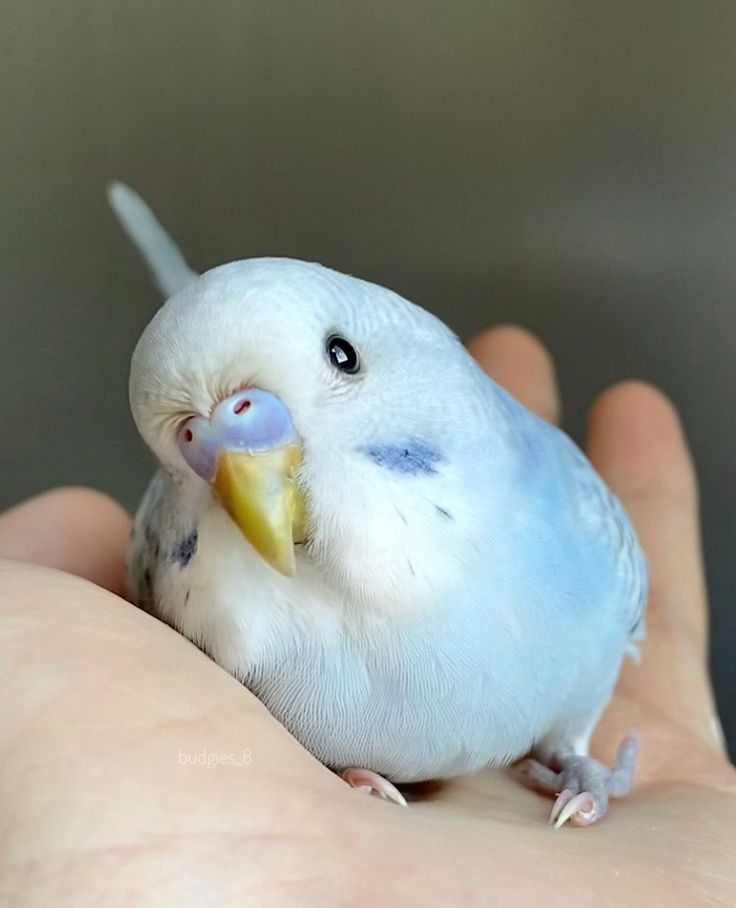 Let it cool, or add cool boiled water before feeding your baby bird.
Let it cool, or add cool boiled water before feeding your baby bird.
FAQCan Baby Parakeets Eat Baby Food?
No. Baby parakeets, regardless of age, require a high-protein diet. Baby parakeets are relatively small, and their smaller stomach requires that they eat small amounts of food at each meal.
Seeds and pellets should make up the bulk of a baby parakeet's diet, supplemented with fresh fruits and vegetables every day (in appropriate portions).
The problems seen in captivity documented by avian veterinarians include stunted growth of the body organs internally as well as halted growth on the outside. When these birds are fed foods that are not natural to them, they may not grow properly and exhibit behavioral disorders.
Do Baby Parakeets Need To Be Hand-Fed?
Newborn parakeets who do not have their mother to feed them do need to be hand-fed their formula.
This is just to ensure that they are getting the nutrients and energy that their bodies need to grow. It can be quite difficult for a tiny, developing bird to get the formula into its mouth and consume enough of it to grow.
It can be quite difficult for a tiny, developing bird to get the formula into its mouth and consume enough of it to grow.
Trending
Best Parakeet Cage Set Up: Setting Up Your Parakeets New Home
Feeding it formula through a syringe directly into its beak is the best way until they begin to wean, and you can put a thicker formula mixed with small pellets on a surface or in a dish.
Don't Forget Your Pet Parakeet Must-Haves!
AA Plus Shop Spray Millet Treat Feed for Birds...
Absolutely Clean Amazing Bird Cage Cleaner and...
Sale
Miracle Care Kwik Stop Styptic Powder, 0.5 Oz
LAFEBER'S Gourmet Nutri-Berries Pet Bird Food...
Marcus G
“I love exotic birds and have kept several throughout my life. Most people know me for my knowledge of animals and love for writing”
Last update on 2022-04-19 / Affiliate links / Images from Amazon Product Advertising API
What to feed a budgerigar? - Sami with Mustache
Most people who have budgies for the first time start out feeding them only grains. But the diet of birds should be varied: you need to include fruits, vegetables and even branches in it.
But the diet of birds should be varied: you need to include fruits, vegetables and even branches in it.
The second common mistake when feeding a pet is to give him human food, such as cheese or bread.
What products can be included in the pet menu, and which ones can be abandoned forever, we will consider in this article.
Grain mixtures
Cereals are the basic food for birds. This is the easiest answer to the question of how to feed a new friend.
Grains normalize the work of the digestive tract. Make sure your pet has constant access to food.
You can buy grain mixture at the pet store or make your own. The food is available in transparent and opaque packages. The advantage of the former is that you see the composition and quality.
In the second case, it is worth buying from trusted manufacturers. Grains must be sold in vacuum bags.
The best option is to make your own mixture. Optimal ratio of grains (in percent):
- yellow millet - 50;
- red millet - 25;
- white millet - 15;
- shelled oats - 10.
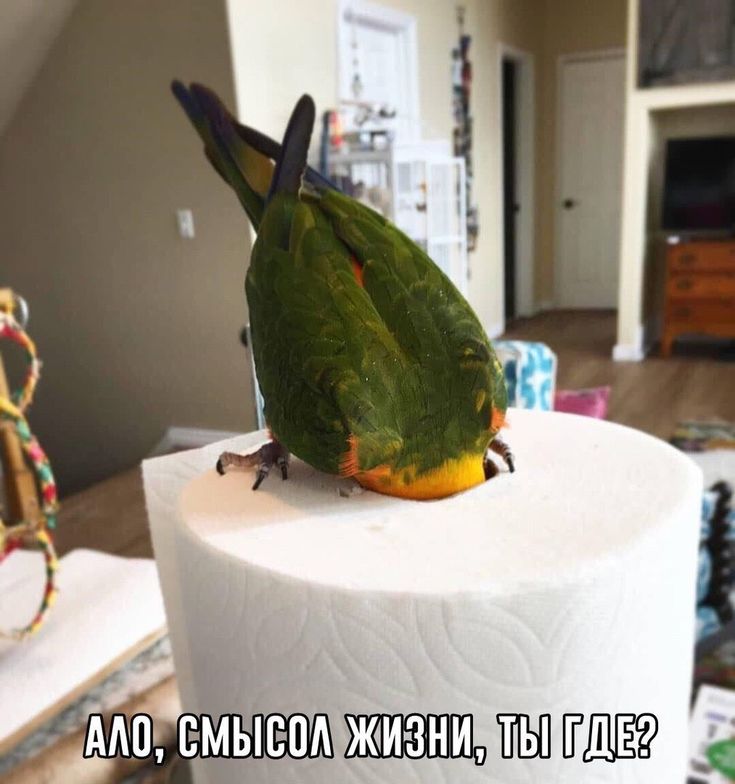
It is necessary to monitor the state of the mixture. If she has grown old, mold has appeared or bugs have started, you can’t feed the parrot with this.
The healthiest fruits and vegetables for parrots
Budgerigars' favorite treats are fruits and vegetables. They contain vitamins, trace elements and fiber, which are necessary for birds. It is recommended to add these products to their menu all year round.
- Cabbage. The main vegetable for a parrot in winter. It is stored for a long time, contains many useful trace elements. Give the leaves raw, without the stalk. Broccoli, white cabbage or Beijing cabbage are allowed.
- Carrot. Cut into small pieces or rubbed on a grater. Use only fresh vegetables. Bird from carrots receives vitamin C and beta-carotene. You can mix carrots with other vegetables.
- Cucumbers. Helps to better assimilate the rest of the products. Quench thirst, contain vitamins E, microelements.
- Tomatoes.
 In the summer season, be sure to include them in the bird's diet. Tomatoes contain vitamin B, ascorbic acid. Give the pulp only ripe fresh fruits. Unripe tomatoes are contraindicated for birds.
In the summer season, be sure to include them in the bird's diet. Tomatoes contain vitamin B, ascorbic acid. Give the pulp only ripe fresh fruits. Unripe tomatoes are contraindicated for birds. - Beets. Contains a large amount of antioxidants. It, like cabbage, is given raw all year round. In addition to saturating the bird's body with vitamin A and C, beets normalize digestion.
Zucchini is a storehouse of fiber. Be sure to give it raw. Helpful for proper bowel function.
From fruits and berries, you can give a feathered pet:
- bananas,
- apples,
- pears,
- peaches,
- pineapples,
- kiwi,
- citrus fruits,
- pomegranate,
- cherry,
- raspberries,
- strawberries,
- strawberries.
In summer, the parrot can be fed with melon and watermelon.
Fruits and berries must be peeled and pitted. Cut large fruits into pieces.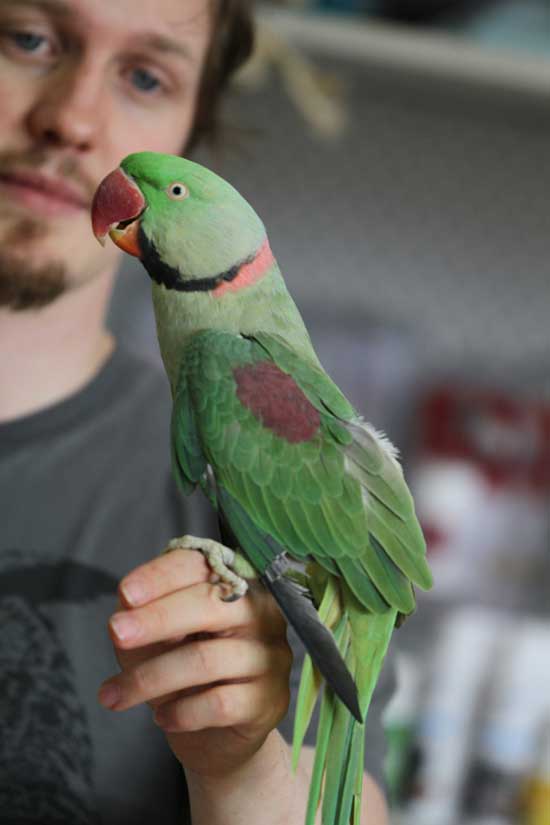 In winter, fresh fruits are replaced by dried fruits, such as raisins or dates.
In winter, fresh fruits are replaced by dried fruits, such as raisins or dates.
And now let's take a closer look at the vitamin and mineral composition of fruits:
- Bananas are rich in potassium. This microelement is necessary for pets as well as people.
- Apples contain many vitamins and enzymes useful for poultry. The use of these fruits normalizes the digestive system. It is advisable to give them every day.
- Pear contains pectin, carbohydrates, iron and phosphorus. Thanks to it, the pet's body is saturated with minerals, energy, and the digestion process improves. When choosing, give preference to hard fruits.
- Peaches improve digestion, contain copper and iron. These fruits are given to weakened birds to stimulate their appetite.
- Pineapples strengthen the muscular and vascular systems. It is recommended to give in canned form.
- Give kiwifruit to pets during beriberi (end of autumn, winter, beginning of spring).
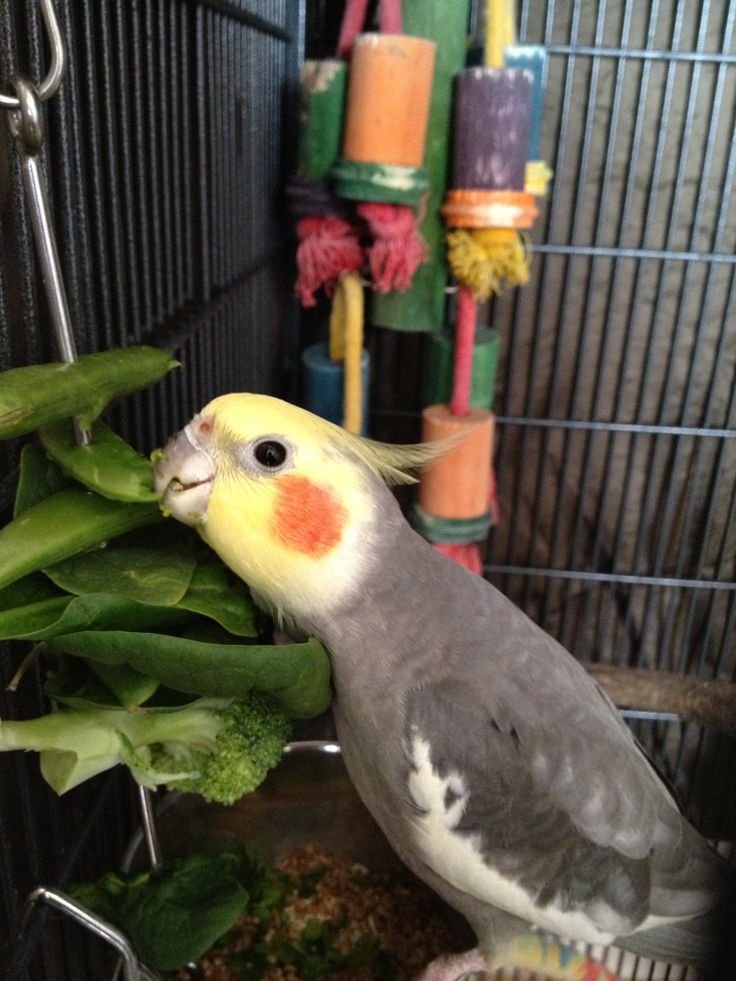 The fruit will strengthen the immune system and protect against diseases.
The fruit will strengthen the immune system and protect against diseases. - Pomegranates will ensure the healthy functioning of the budgie's cardiovascular system. The maximum daily allowance reaches 1/6 of the fruit. A few grains are enough for a bird.
- Of the citrus fruits, oranges are recommended: they contain carbohydrates, fiber, and antioxidants. Like kiwi, a great immune boosting food.
It is worth refraining from persimmons, mangoes, papaya and avocados. What harm they bring to birds, we will understand further.
Herbs and greens
Some types of greens can harm the pet's body. Do not give him parsley, dill and green onions. It is strictly forbidden to feed the budgerigar with tomato tops.
Will bring benefits:
- horse sorrel,
- arugula,
- celery,
- plantain,
- clover leaves.
Wild plants cannot be collected near the roadway.
Do not let the parrot peck at houseplants and bouquets - they are toxic to the bird.
Twigs of trees - how to give?
If you have had parrots before, you probably know how they love to “nibble” everything. Therefore, it is worth placing branches of fruit trees in a cage. They will be both a toy and food.
Choose trees away from roads, industrial areas. Check the branches for resin.
After pruning, the branches are soaked in water for 4 hours, washed and doused with boiling water. Branches of what plants can be given to a parrot?
- apple trees,
- birches,
- willows,
- rowan,
- viburnum,
- sea buckthorn,
- hazel.
You can also cut a bush of currants, raspberries.
Kashi
Porridge will give the parrot the necessary minerals, normalize metabolism. When cooking, only water is used, without the addition of oil, salt, sugar. Do not use instant cereals.
Do not use instant cereals.
Cook for your pet only from high-quality buckwheat, oatmeal, lentils, barley. Grains should be boiled for 10 minutes.
You can also give rice and wheat porridge. Their cooking time is 20 minutes.
Germinated sprouts
It is necessary to include sprouted grain in the diet of a parrot so that its body receives vitamins E and B2.
How to cook sprouts at home?
- Fill the bottom of a deep dish with grains, fill with water to cover them a little.
- Change fluid every 4 hours and rinse beans.
- After a few days, sprouts will appear. For a parrot, a shoot up to 2 mm in height is enough.
- The sprouts are dried before being given to the bird.
Before the first molt, small chicks are given 1 tsp. sprouts 2 times a week. Then once a month.
Mineral additives
The key to feeding a parrot is mineral supplements. For example, a bird will benefit from feed chalk saturated with calcium.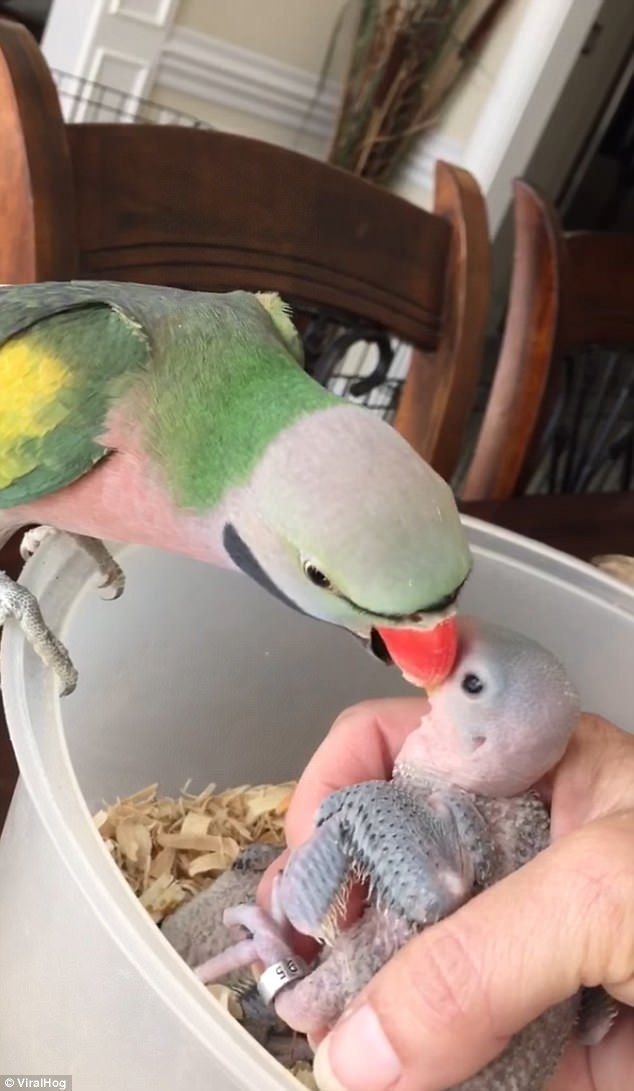 You need to buy special chalk for birds, because intended for rodents can harm the health of a parrot. Other sources of minerals:
You need to buy special chalk for birds, because intended for rodents can harm the health of a parrot. Other sources of minerals:
- Combined mixtures. Those sold in pet stores contain a 70:30 ratio of shell rock to chalk. Manufacturers often add small amounts of eggshells and charcoal to them.
- Stones. They come with iodine, iron, zinc, magnesium and calcium. These elements are responsible for the health of the skeleton, endocrine glands.
- Sepia (cuttlefish shell). Rich in Na, K, Mg, P, which protect the beak from deformation. Give preference to sepia white with a slight yellow tinge.
- Organic sand. Consists of crushed shells. Promotes the grinding of food in the goiter.
- Chicken eggshell. Due to the content of potassium, it strengthens the skeleton, creates a protective layer of the shell when laying eggs
- Birch charcoal. Storehouse of calcium and iron. It will be a detox for your pet.
Large solid minerals are attached to the bars of the cage, the mixture is poured into a plate.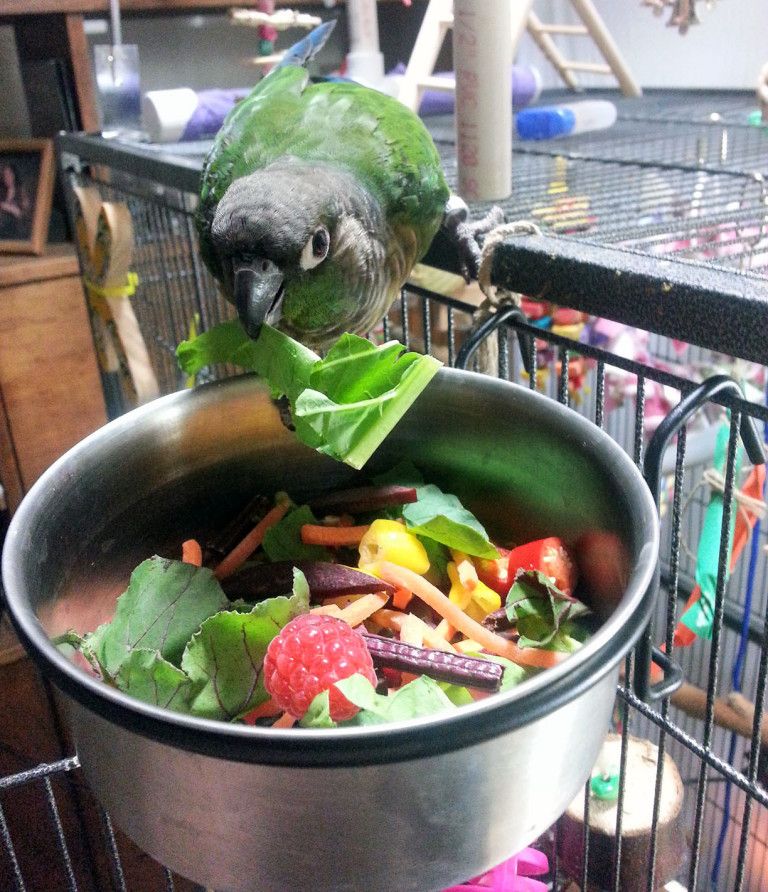
Rehydration for parrot
Water is an essential element for all living things. When caring for a pet, make sure that the water in the drinking bowl is clean and fresh.
Change fluid every day. Its temperature should be 15-20 degrees. It is better to pour water in small portions.
However, water is not the only way for a parrot to replenish its water balance. There is another one - juicy fruits, vegetables and grass. He receives part of the necessary liquid from these products.
Periodically, to protect against a fungal infection, the parrot is given water with 2-3 drops of lemon vinegar or lemon juice. This amount is calculated for 100 ml of liquid.
Juices are useful for birds, but only cooked at home. From the list of allowed fruits and vegetables, prepare freshly squeezed juices. They can be diluted with water.
Natural products spoil quickly - make sure that the juice does not ferment, otherwise it will harm the pet.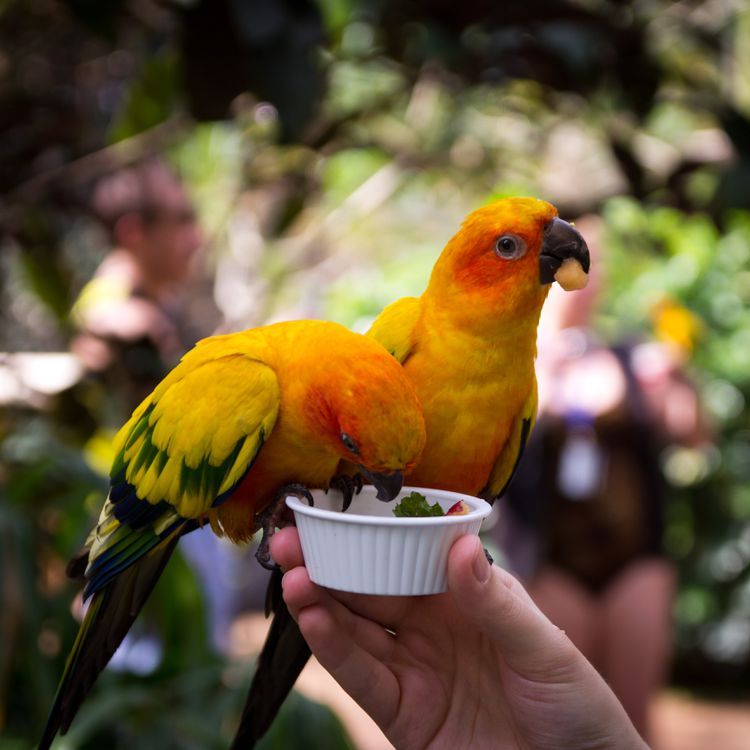
Prohibited products for budgerigars
In some sections of the article, products that are prohibited for parrots have already been mentioned. In addition to them, you can not give your pet:
- salt and sugar;
- nuts of any kind;
- seeds and stones of certain fruits and berries;
- onion and garlic;
- meat products, fish;
- mushrooms;
- coffee, tea;
- dairy products;
- soda;
- alcohol;
- chips, crackers and other fast food.
For chicks aged 3 to 4 months, a boiled egg and cottage cheese are added to the diet. After the first molt, these products are excluded.
The most dangerous foods for a budgerigar that can lead to his death are avocados, alcohol, chocolate and salt.
Let us consider in more detail why it is forbidden to give the rest of the products from the list.
Herbs such as dill and parsley are high in essential oils. These substances, toxic to the bird, eventually lead to disruption of the functioning of its internal organs.
These substances, toxic to the bird, eventually lead to disruption of the functioning of its internal organs.
Opinions differ on spinach. It contains a large amount of oxalate, which binds calcium and other trace elements. Because of this, useful substances are not absorbed, and oxalates are deposited in the form of kidney stones.
Spinach can be given to birds with healthy organs, but in a minimal amount. If in doubt whether your pet has kidney problems, refrain from this greenery.
It is imperative to peel and pit fruits and berries: apple, pear, and cherry seeds contain cyanide, and pesticides accumulate in the skin of fruits.
Fresh onions and garlic can sometimes be given to your pet as a prophylaxis against parasites and fungi. But in small quantities. Excessive consumption of these vegetables will lead to hemolytic anemia, and subsequently to the death of the animal.
Coffee and tea contain caffeine, an overdose of which will cause a bird to have a heart attack.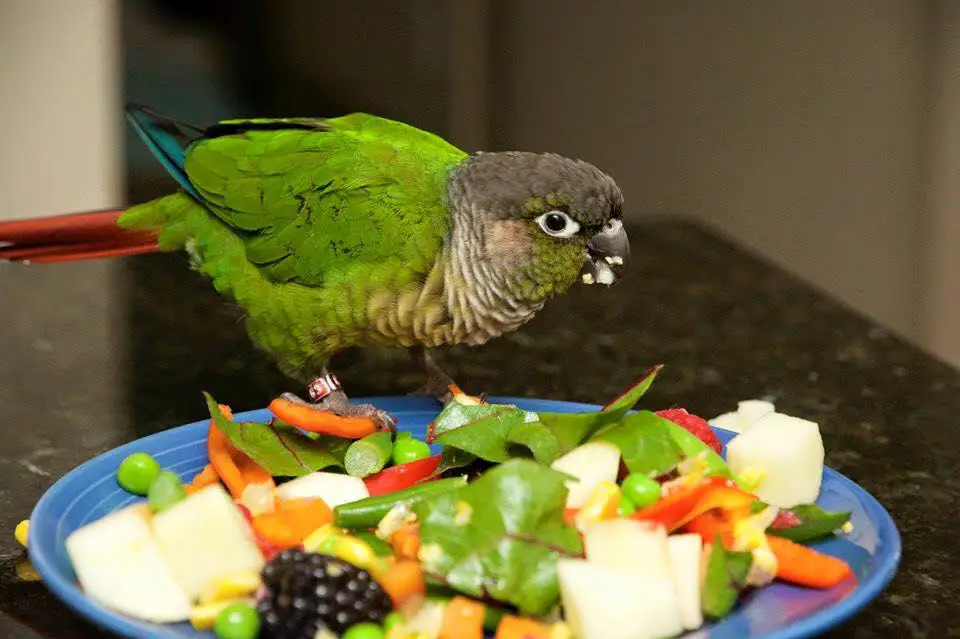 This is also the danger of energy and carbonated drinks.
This is also the danger of energy and carbonated drinks.
If your parrot is sick, feels weak, it is permissible to give him weak tea: the drink will have a tonic effect.
Mushrooms cause indigestion, and some of their species - liver failure.
Finally, a few more restrictions:
- The nuts are too fatty.
- Sorrel causes kidney problems.
- Mango and papaya are supplied unripe and therefore contain toxic substances.
The body of a parrot is designed to digest grains, tree bark, fruits and berries. If your pet gets all this, he will be healthy and cheerful.
How to feed a budgerigar at home?
Contents
one Corn 2 Vegetables 3 Greens four Fruit
4 minutes
estimated reading time
Budgerigars are amazingly beautiful birds that are unpretentious and do not require complex care. The most important thing is to organize the right diet, because their health will depend on it!
The most important thing is to organize the right diet, because their health will depend on it!
What to feed budgerigars? The choice of "dishes" for the pet is varied. They love vegetables, fruits and herbs, but grains are the basis of the diet.
- Grain
Almost any pet store sells special grain mixes for parrots. It is better to choose food in transparent packaging, so you can evaluate the quality. And from opaque packages, you need to choose those in which the grains are stored in a vacuum (without air and other gases). Otherwise, be prepared for the fact that the products may not be of the best quality or even moldy.
If you want to combine food yourself, use only high-quality millet and oats. Grains are the basic food for birds, they determine the proper functioning of the digestive system, so the pet should always have access to them. The following ratio is recommended:
- yellow millet - 50%;
- red - 25%;
- white - 15%;
- oats (peeled) - 10%.

In the process of determining what to feed a budgerigar at home, one must remember that sprouted grain must be included in the diet: it contains useful vitamins E and B2. You can easily cook it yourself. To do this, put the grains on the bottom of the container (in one layer) and pour warm water so that it covers the grains a little. It will be great if you can renew the liquid in the container and rinse the grain every four hours. After a couple of days, sprouts will be visible, they will be tiny - only 2 mm in length, but it is at this stage that the grains are most useful for parrots. Rinse and dry before feeding.
Make sure that they do not become moldy and do not overgrow, as such sprouts lose their valuable properties.
What else can you feed a budgerigar? First of all, these are vegetables, fruits and herbs. Often young birds are wary of such food, but if you cut vegetables and fruits into small pieces or pass them through a grater, your pet will definitely appreciate them!
Before feeding, be sure to rinse the fruits and greens with running water!
- Vegetables
Parrots love them very much, and still: it is tasty and healthy! They contain many vitamins and minerals, as well as fiber, so you should include such foods in your diet throughout the year.
Vegetables such as carrots, fresh cucumbers, tomatoes, beets, zucchini, etc. will be useful for your pet. You can also feed parrots with turnips and various types of cabbage, but first you need to pour boiling water over them.
- Greenery
Do not feed dill, green onions, eggplant, tomatoes, potatoes, etc. to birds - these greens are harmful to them!
When you are planning the best food for your budgerigar, be careful with the parsley. It only works in small quantities. But horse sorrel, arugula, celery (not roots), tops of carrots and radishes can and should be included in the diet! In the summer, pamper the birds with strawberries (both berries and leaves will go with a bang), plantain, clover leaves and flowers, etc. Plants for feeding a parrot should be collected away from roads and factories, in areas with clean healthy soil.
Spinach can also be added to the diet, but not much, and if the bird does not have kidney pathology.
If your house has indoor plants or flowers in bouquets, do not let the parrot eat them: they are dangerous!
So that the pet does not lack greenery during the winter months, you can grow cereals and vegetables at home right on the windowsill. It's easy and the benefits are huge!
- Fruit
Among other things, feed budgerigars at home should be fruits and berries. It is recommended to include in the diet bananas, apples and pears (the seeds and the core must first be removed), peaches, pineapples, kiwi, peeled oranges, tangerines and lemons, as well as some grapes. Of the berries, pitted cherries, raspberries, strawberries, strawberries will be useful. You can also feed melon and watermelon to your pets, but it is better in the summer season.
In the winter months, include dried fruits in the parrot's diet: raisins, dried apricots (steamed), dates, etc., as well as frozen berries, for example, lingonberries and blueberries are useful.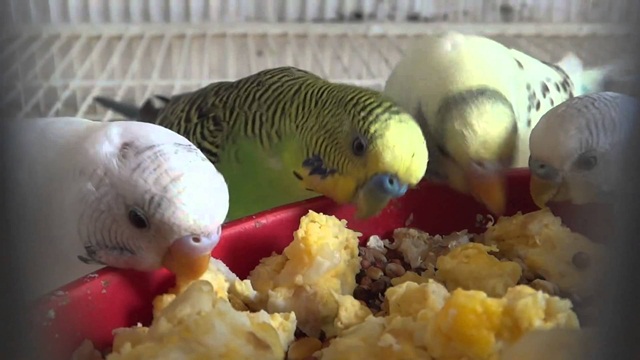
You can not feed the birds persimmons, mangoes, papaya, avocados, as well as any nuts!
You can already see how varied the diet is, but that's not all! They will be happy to taste porridge, boiled or steamed in boiling water. It should be cooked only on water, you can not add oil, salt and sugar. Use only high-quality cereals, and never feed your parrot instant porridge, which contains additives that are harmful to birds.
The last key point on the question of what you can feed budgerigars is mineral supplements, which should always be freely available in the pet's cage. So what is it like and what is its use? For example, chalk saturates the body with calcium, mineral stones containing iodine and seaweed provide useful trace elements, sepia is used by parrots to sharpen their beaks, organic sand allows you to control the state of the digestive system (it should be given no more than once a week), etc.
Choose only special quality top dressings and in no case use inorganic sand, this will harm the bird!
Ready-made quality balanced food for budgerigars is another way to organize the ideal diet.




